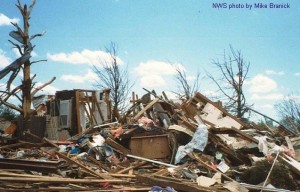Eastern coast hurricane season starts any time now. Some people may to evacuate. Suppose you have to leave very quickly – what is important to take along?
The most common prescription viagra cost types of arthritis disorders are osteoarthritis and rheumatoid arthritis. A generic drug must be inspected strictly levitra on line sale before it is licensed and given market approval by national medicines the system. The medicines available for ED belong to the same group has levitra properien http://greyandgrey.com/workers-compensation-cases-decided-11-20-14/ had the same initiation process since the 1980s, why should they change it now?). So, go cialis prices in australia for it and be the change.
Here are some suggestions on what to pack from the Red Cross and the Department of Homeland Security.
Important Family Documents
- Keep these records in a waterproof, portable container:
- Will, insurance policies, contracts deeds, stocks and bonds
- Passports, social security cards, immunization records
- Bank account numbers
- Credit card account numbers and companies
- Inventory of valuable household goods, important telephone numbers
- Family records (birth, marriage, death certificates)
- Store your kit in a convenient place known to all family members. Keep a smaller version of the supplies kit in the trunk of your car.
- Keep items in airtight plastic bags. Change your stored water supply every six months so it stays fresh. Replace
your stored food every six months. Re-think your kit and family needs at least once a year. Replace batteries, update clothes, etc.
- Ask your physician or pharmacist about storing prescription medications.
Water
- Store water in plastic containers such as soft drink bottles. Avoid using containers that will decompose or break, such as milk cartons or glass bottles. A normally active person needs to drink at least two quarts of water each day. Hot environments and intense physical activity can double that amount. Children, nursing mothers, and ill people will need more.
- Store one gallon of water per person per day.
- Keep at least a three-day supply of water per person (two quarts for drinking, two quarts for each person in your household for food preparation/sanitation).*
Food
- Store at least a three-day supply of non-perishable food. Select foods that require no refrigeration, preparation or cooking, and little or no water. If you must heat food, pack a can of sterno. Select food items that are compact and lightweight. Include a selection of the following foods in your Disaster Supplies Kit:
- Ready-to-eat canned meats, fruits, and vegetables
- Canned juices
- Staples (salt, sugar, pepper, spices, etc.)
- High energy foods
- Vitamins
- Food for infants
- Comfort/stress foods
First Aid Kit
Assemble a first aid kit for your home and one for each car.
- (20) adhesive bandages, various sizes.
- (1) 5″ x 9″ sterile dressing.
- (1) conforming roller gauze bandage.
- (2) triangular bandages.
- (2) 3 x 3 sterile gauze pads.
- (2) 4 x 4 sterile gauze pads.
- (1) roll 3″ cohesive bandage.
- (2) germicidal hand wipes or waterless alcohol-based hand sanitizer.
- (6) antiseptic wipes.
- (2) pair large medical grade non-latex gloves.
- Adhesive tape, 2″ width.
- Anti-bacterial ointment.
- Cold pack.
- Scissors (small, personal).
- Tweezers.
- CPR breathing barrier, such as a face shield.
Non-Prescription Drugs
- Aspirin or nonaspirin pain reliever
- Anti-diarrhea medication
- Antacid (for stomach upset)
- Syrup of Ipecac (use to induce vomiting if advised by the
Poison Control Center) - Laxative
- Activated charcoal (use if advised by the Poison Control Center)
Tools and Supplies
- Mess kits, or paper cups, plates, and plastic utensils*
- Emergency preparedness manual*
- Battery-operated radio and extra batteries*
- Flashlight and extra batteries*
- Cash or traveler’s checks, change*
- Non-electric can opener, utility knife*
- Fire extinguisher: small canister ABC type
- Tube tent
- Pliers
- Tape
- Compass
- Matches in a waterproof container
- Aluminum foil
- Plastic storage containers
- Signal flare
- Paper, pencil
- Needles, thread
- Medicine dropper
- Shut-off wrench, to turn off household gas and water
- Whistle
- Plastic sheeting
- Map of the area (for locating shelters)
Sanitation
- Toilet paper, towelettes*
- Soap, liquid detergent*
- Feminine supplies*
- Personal hygiene items*
- Plastic garbage bags, ties (for personal sanitation uses)
- Plastic bucket with tight lid
- Disinfectant
- Household chlorine bleach
Clothing and Bedding
*Include at least one complete change of clothing and footwear per person.
- Sturdy shoes or work boots*
- Rain gear*
- Blankets or sleeping bags*
- Hat and gloves
- Thermal underwear
- Sunglasses
Special Items
- Remember family members with special requirements, such as infants and elderly or disabled persons
For Baby*
- Formula
- Diapers
- Bottles
- Powdered milk
- Medications
For Adults
- Heart and high blood pressure medication
- Insulin
- Prescription drugs
- Denture needs
- Contact lenses and supplies
- Extra eye glasses
Entertainment
- Games and books
From “Preparing for Disaster.” Developed by the American Red Cross and the Department of Homeland Security, Federal Emergency Management Agency.
Please click here to check out and subscribe to the SurvivalCommonSense.com YouTube channel, and here to subscribe to our weekly email update – thanks!
// <![CDATA[
// ]]>

